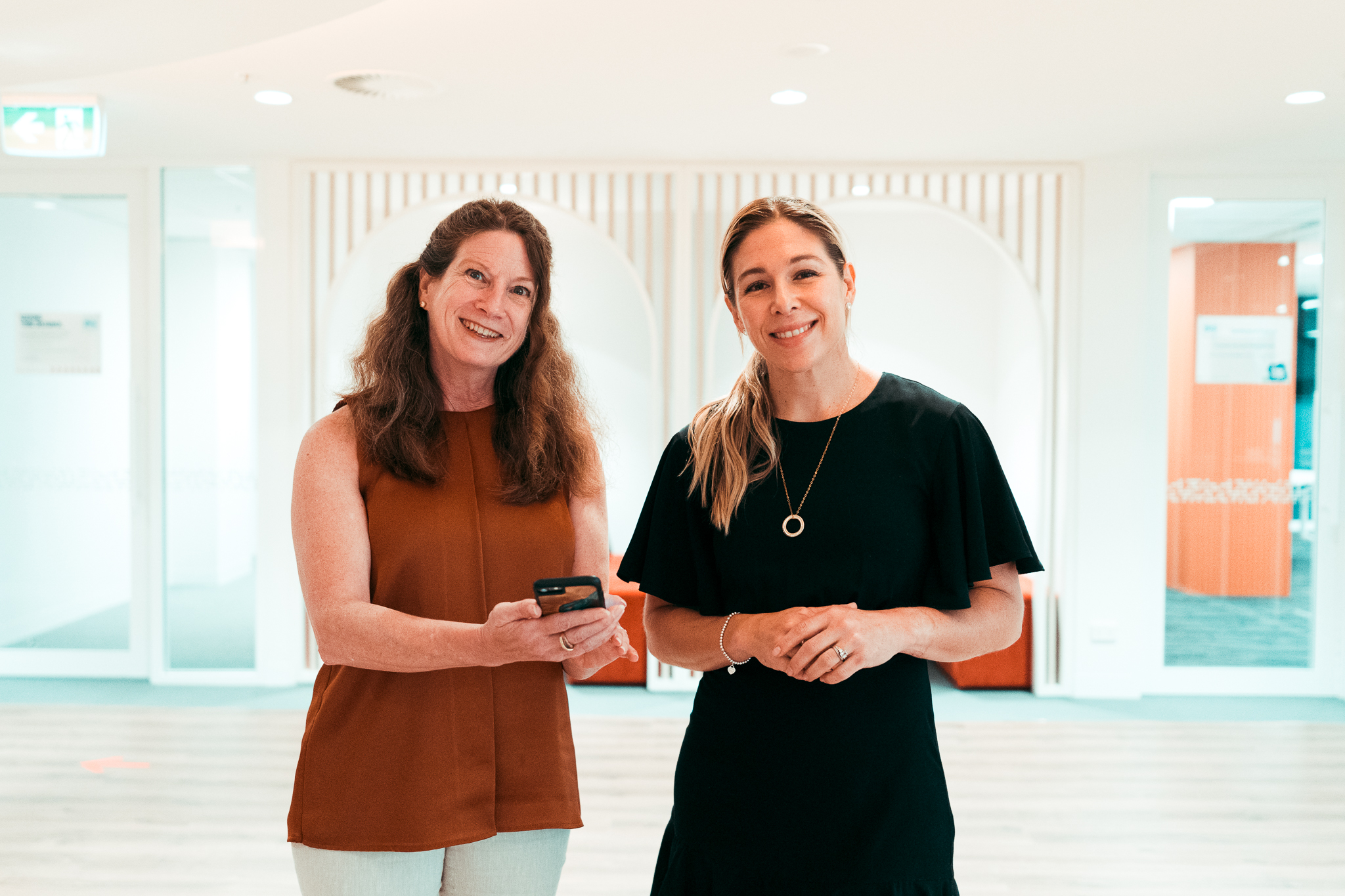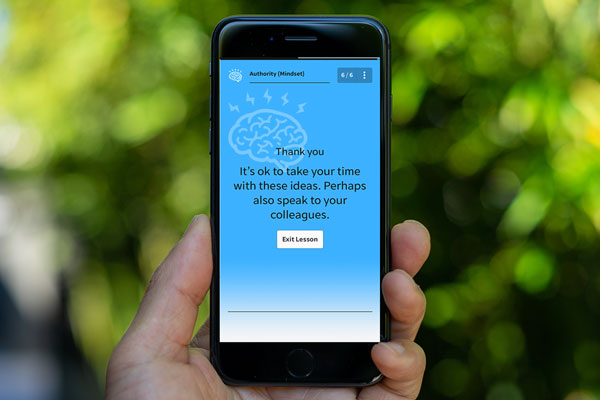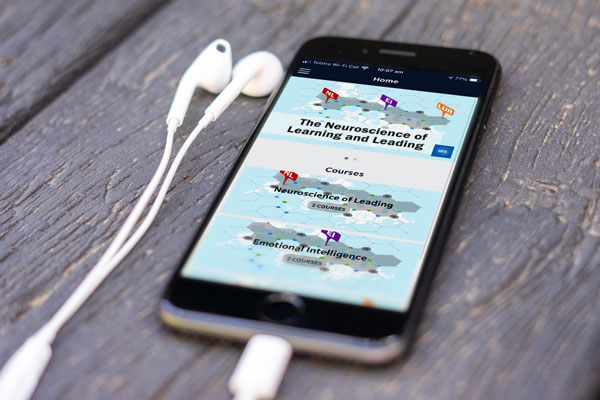AISNSW has created an innovative, micro-learning app that offers school leaders and educators the latest evidence-based skills to guide those around them through the complexities of change that occurs in unprecendented times.
What if professional learning was short enough to take only a few minutes of your time but potent enough to change the way you think, feel and lead?
AISNSW has developed an app that is supporting school leaders to grow in their ability to manage the complexities of change in a way that suits the busy demands of the school day.

AISNSW's Jenni-Lee WIlliams (L) and Kelly Borg say the Neuroscience for Learning and Leading app is designed for busy educators.
The newly launched AISNSW Neuroscience of Learning and Leading App (NLL) offers short bursts of accredited learning designed to cater to busy school executives and teachers to help them transform how they manage change and on-the-job challenges.
AISNSW Head of Teaching and Learning Kelly Borg said the NLL app is a learning tool on the go, inspired by the recognition that while ongoing professional learning is crucial, it can be done in a way that fits into educators’ schedules rather than taking over them.
Hear from Kelly Borg, AISNSW Head of Teaching and Learning
“The Neuroscience of Learning and Leading offers micro-lessons of high-powered learning aimed at enhancing skills in change management drawing on neuroscience of leading, emotional intelligence and transformation."
“We know educational leaders are busy with days and lives full of students, teachers, meetings, duties and planning, family, friends and the luxury of self-time.
“We also know that for educational leaders learning is not a luxury, it is an absolute necessity, no matter how much they have packed in their schedule,” Kelly said.
“The Neuroscience of Learning and Leading offers micro-lessons of high-powered learning aimed at enhancing skills in change management, drawing on neuroscience of leading, emotional intelligence and transformation.
“The very latest research in neuroscience shows that the parts of our brain where the best learning happens give us 20 minutes at a time where they work effectively to learn new things. With NLL users control the pace, space and timing. The learning is easy to digest and can be embedded into day-to-day experiences,” Kelly said.

Neuroscience of Learning and Leadership App is designed for all educators.
“NLL provides the tools in quick bursts so that knowledge and practice can be applied in a way that recognises and respects the demands of schools.”
AIS Leadership Centre Dean Jenni-Lee Williams said the app was suitable for all educators including part-time and casual teachers with an emphasis on supporting school leaders and those interested in self-awareness and strategic management.
“Schools are places of incredibly rapid change. Change per se isn’t hard; it’s a technical problem, but taking people with you and getting people to go on the journey of change for the sake of students is an adaptive problem – it’s a difficult thing to do because people naturally resist change,” Jenni-Lee said.
“NLL provides the tools in quick bursts so that knowledge and practice can be applied in a way that recognises and respects the demands of schools.”
AISNSW Neuroscience for Leading and Learning course content
The course content is organised into three subsets, which draw on the principles of emotional intelligence and neuroscience in leadership. Each subset acts as a theme where the user is either learning or practising the skills being offered to them. The Neuroscience of Learning and Leading consists of eight courses, averaging five hours in duration.
“Part of the program is for educators to understand themselves better and how they show up in times of change along with understanding the people around them to enact sustainable change as well."
Neuroscience of Learning and Leading content subsets
- Mindset – to consider knowledge, perspective and disposition
- Skillset – the opportunity to practice what is being learned
- Toolset – the ongoing tools needed to deploy the learnings in the everyday environment.
“Part of the program is for educators to understand themselves better and how they show up in times of change along with understanding the people around them to enact sustainable change as well,” Jenni-Lee said.
The app draws on intelligent theories such as the SCARF model developed by Australian David Rock, Director of the Neuroleadership Institute and author of books including Coaching with the Brain in Mind and Quiet Leadership. The SCARF model represents social domains that drive human behaviour either away from threats or towards rewards.
The SCARF Model
- Status
- Certainty
- Autonomy
- Relatedness
- Fairness.
“In the period of COVID-19 our autonomy and our certainty have been highly challenged – what we normally do when we have those survival triggers being challenged is to turn to our relatedness domain however this has also been problematic because we’ve had social distancing. Once you understand your triggers and what sets you off you can learn strategies to deal with them,” Jenni-Lee said. “The app provides these strategies.”

Another technique offered in the app is the practice of Box Breathing, a controlled breathing strategy used by the military to destress under extreme conditions.
“Box breathing allows you to decrease the level of cortisol [stress hormone] in the brain. It allows you to calm your mind and to focus a part of your brain – prefrontal cortex – the learning part of your brain on what you need to focus on as opposed to worrying about what might be seen as a threatening environment,” Jenni-Lee said.
“Ultimately it is developed by educators for educators to learn about themselves in those small windows of time, to reflect on past circumstances and apply new strategies to work their way through to successful change.”
Find out more about the AISNSW Neuroscience of Learning and Leading app.
New to AISNSW and want to receive AISNSW Education News updates? Click here to register, and select ‘AISNSW Education News’ on the Areas of Interest/Subscriptions page.